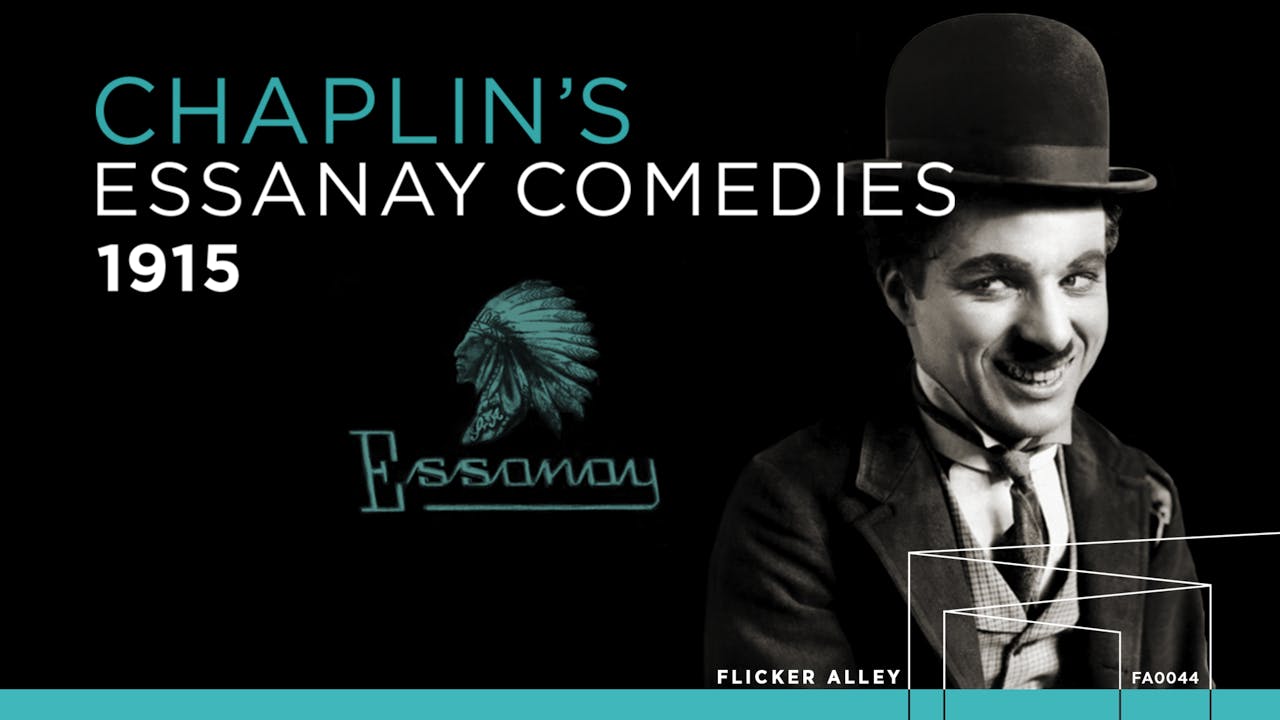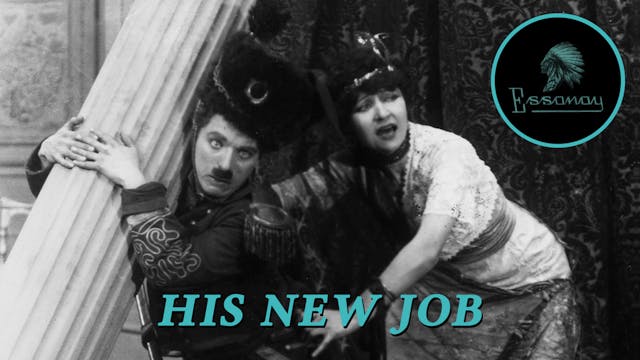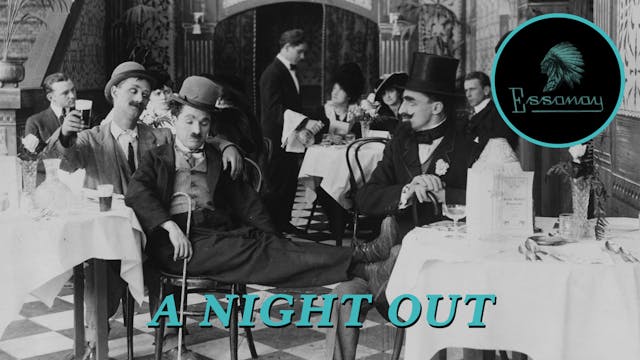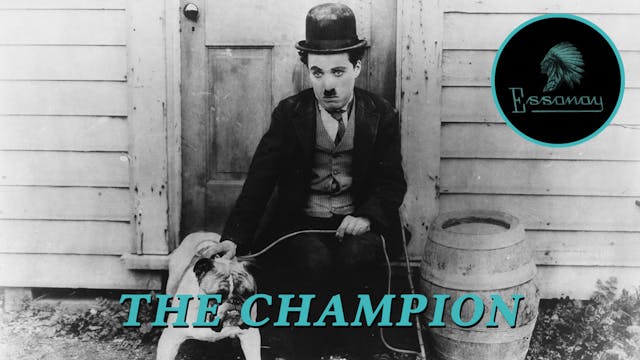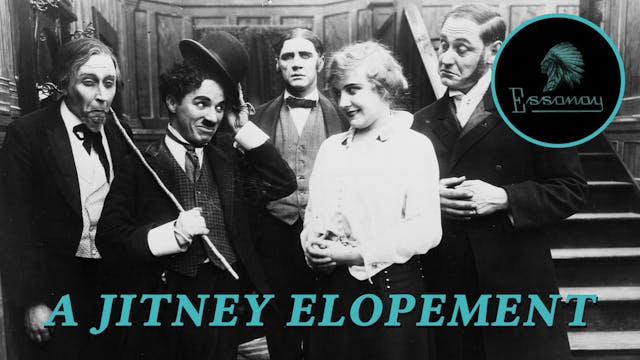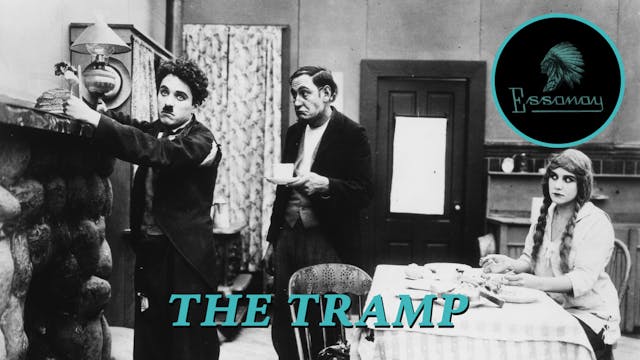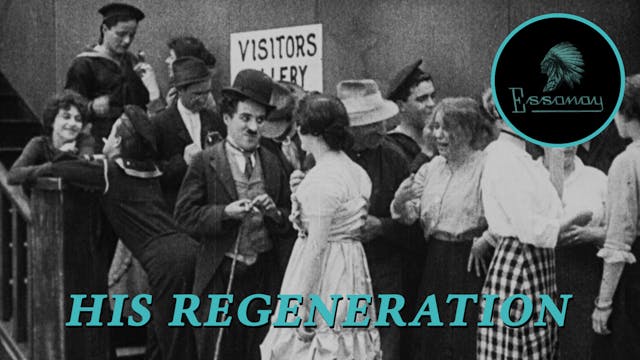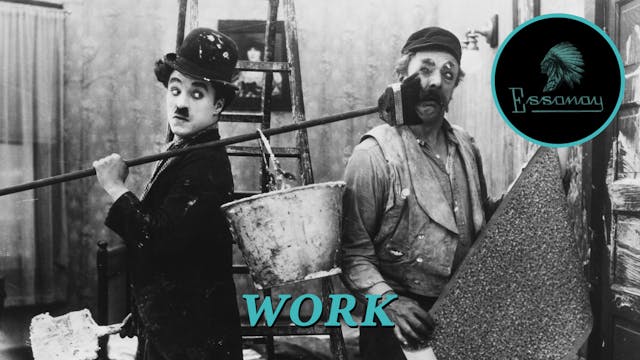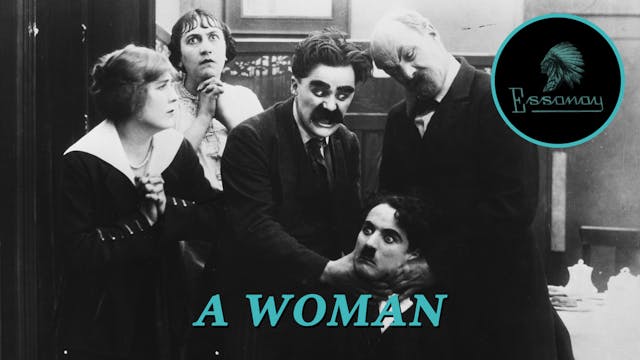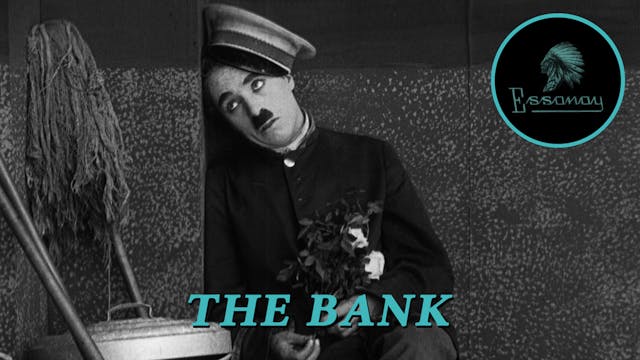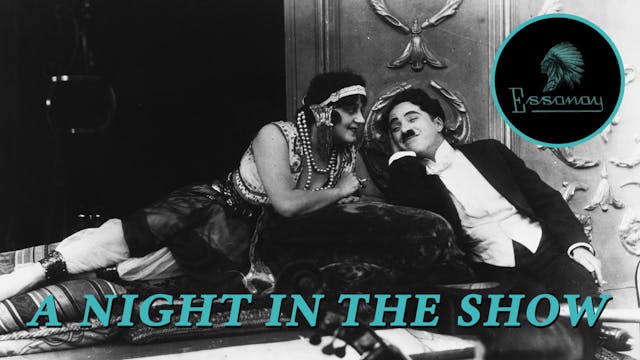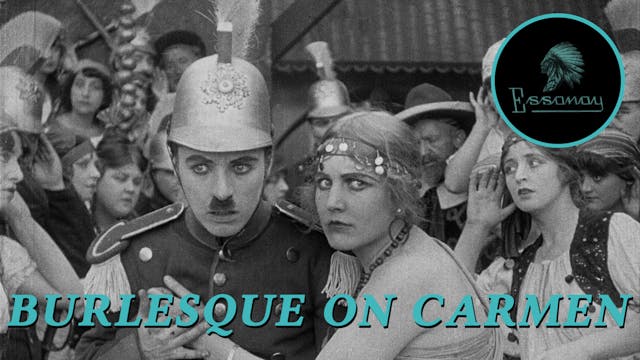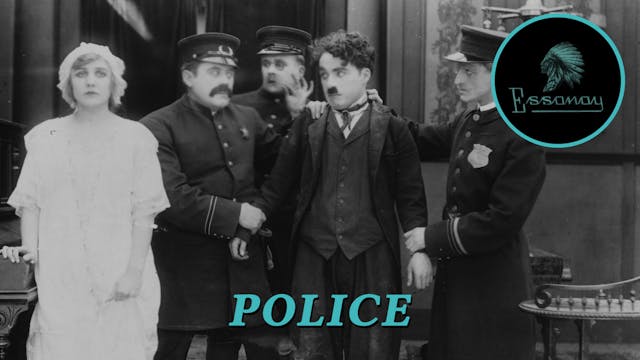Chaplin's Essanay Comedies (1915)
In late 1914, Charlie Chaplin was paid the then-unprecedented salary of $1,250 per week (with a bonus of $10,000) in exchange for signing a one-year contract with the Essanay Film Manufacturing Company. The resulting 14 films he created for Essanay find Chaplin further experimenting with new cinematic techniques, while continuing to add complexities and pathos into his celebrated Little Tramp character, soon to become immortalized as the face, hat, and mustache of modern screen comedy.
Flicker Alley and The Blackhawk Films® Collection are proud to present CHAPLIN'S ESSANAY COMEDIES, the third and final installment of the Chaplin Project (lead by Lobster Films and Cineteca di Bologna), a massive, twelve year endeavor to restore all of Chaplin’s cinematic output from 1914-1917. Featuring 15 newly restored films—HIS NEW JOB, A NIGHT OUT, THE CHAMPION, IN THE PARK, A JITNEY ELOPEMENT, THE TRAMP, BY THE SEA, HIS REGENERATION, WORK, A WOMAN, THE BANK, SHANGHAIED, A NIGHT IN THE SHOW, BURLESQUE ON CARMEN, and POLICE were all scanned under the aegis of Association Chaplin at a resolution of 2,000 lines from original 35mm prints gathered from archives all over the world, then digitally assembled and restored, a collaborative effort of Lobster Films and Cineteca di Bologna. These editions feature scores from some of the foremost composers and musicians of silent film accompaniment, including Timothy Brock, Robert Israel, and The Mont Alto Motion Picture Orchestra.
-
His New Job (1915)
Chaplin's first Essanay comedy - and appropriately titled - was the only film he made at Essanay's Chicago studio located at 1333 West Argyle Street in the city's north side. As with his Keystone films, A Film Johnnie (1914) and The Masquerader (1914), Chaplin chose to set the action in a film st...
-
A Night Out (1915)
Chaplin's second film for Essanay, A NIGHT OUT, was the first of five films shot in and around the company's Niles studio in northern California (approximately 35 miles southeast of San Francisco, and now a district of Fremont, California). The plot is a variation of the teaming of Chaplin and Ro...
-
The Champion (1915)
Inspired by Chaplin’s interest in boxing, as well as the Keystone two-reeler, The Knockout (1914), this comedy has Charlie finding employment as a sparring partner who fights in the prize ring and wins the championship match, with the help of his pet bulldog. In 1915, boxing events were illegal i...
-
In the Park (1915)
IN THE PARK was the first of two one-reel comedies Chaplin created for Essanay. Chaplin hastily made the film in San Francisco at the request of the company as the result of the prolonged production of his previous film, The Champion. The film, which involves Charlie interfering in the lives of t...
-
A Jitney Elopement (1915)
Charlie must rescue his sweetheart, Edna, from an arranged marriage by posing as the Count, the man to whom Edna is betrothed but whom neither she nor her father have ever seen. The film climaxes with a car chase, featuring a Ford automobile, a target of contemporary humor, alongside San Francisc...
-
The Tramp (1915)
Charlie, a wistful but down-on-his-luck wanderer, saves a farmer’s daughter from some thieving toughs and subsequently stops their attempt to rob the farm. He falls in love with the girl, but upon the appearance of her sweetheart, the little fellow realizes the true situation. He departs, leaving...
-
By the Sea (1915)
The second of two one-reel comedies Chaplin made for Essanay, the film was photographed along Ocean Front Walk and Abbott Kinney Pier in Venice, California, in just one day. It is a film that reverts into the old Keystone pattern (beaches, parks, or motion picture studios as locales for fast-pace...
-
His Regeneration (1915)
Chaplin made a guest appearance in this one-reel G.M. “Broncho Billy” Anderson drama, as the Tramp in the film’s dance-hall sequence. That the main title states
that Anderson was “slightly assisted by Charles Chaplin” suggests that Chaplin may have had a hand in the construction and direction of... -
Work (1915)
The havoc created by incompetent laborers had always been prime slapstick material. In this comedy, Chaplin plays a paperhanger's assistant hired to paper a mansion (the imposing home was the Bradbury Mansion at 147 North Hill Street in Los Angeles). The job quickly devolves into anarchy, culmina...
-
A Woman (1915)
Chaplin had twice previously donned female attire at Keystone, in A Busy Day (1914) and The Masquerader (1914). A WOMAN was Chaplin's last and finest female impersonation, a then-popular device among comedians (Julian Eltinge built a career and fortune on it).
The first half of the film is a ...
-
The Bank (1915)
Charlie the janitor love Edna, the pretty bank secretary, but her sweetheart is another Charles, the cashier. One of the best of the Chaplin Essanay comedies, the film's plot is a reworking of his Keystone film, The New Janitor (1914), incorporating a dream sequence inspired by Fred Karno's Jimmy...
-
Shanghaied (1915)
Chaplin rented a boat, the Vaquero, to inspire the plot of this comedy gem. Charlie is hired to shanghai a crew, only to be shanghaied himself as well. He has to save himself and his sweetheart, who has stowed away, before the boat is sabotaged for the insurance.
The film contains some of Cha...
-
A Night in the Show (1915)
This exceptional comedy owes its existence to Fred Karno's sketch, Mumming Birds, a burlesque of a music hall performance with terrible acts and ill-behaved patrons, in which Chaplin had found his great theatrical success playing the Inebriated Swell. Chaplin plays dual roles in the film: a versi...
-
Burlesque on Carmen (1916)
Chaplin’s burlesque of Cecil B. DeMille’s popular film version of Carmen (1915), starring the great opera diva Geraldine Farrar, was originally intended and completed as a two-reel comedy in January 1916. In Chaplin’s version, Don José becomes Darn Hosiery (Chaplin), with Edna Purviance as the se...
-
Police (1916)
Police uses comedy to make pointed – if glancing – social statements which over the years became central to Chaplin’s work. The film arguably is the most mature in the series and anticipates such later films as Easy Street (1917), The Pilgrim (1923), and Modern Times (1936).
The Tramp, releas...
